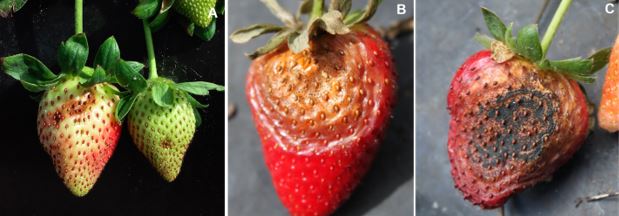By Clint Thompson
A new strawberry disease in Alabama was not as bad as it could have been. Farmers can thank the dry weather conditions that neopestalotiopsis fruit rot disease did not devastate more plants than it could have. Growers only have to look at Florida to see the devastation this disease can cause.

Credit: UF/IFAS GCREC
“One problem that did develop is this relatively new disease neopestalotiopsis that they’ve been dealing with in Florida the last few years. It’s the first time we’ve found it in the state. We found it in I think four counties this year,” said Ed Sikora, professor and Extension plant pathologist in the Department of Entomology and Plant Pathology at Auburn University. “I think because of the dry conditions the disease didn’t get out of control in those fields. I think the growers are fortunate in that regard.
“It’s a pretty deadly disease. From reports I’ve seen it wasn’t bad in Alabama due to the dry weather. But reports out of other states, it can be the most damaging disease we’re going to be dealing with in the near future.”
The disease had been a major problem ever since it was first discovered during the 2018-19 season across five farms in Florida. It was attributed to one nursery source in North Carolina. More than 20 farms experienced the disease during the 2019-20 season, and the disease was attributed to two nursery sources early in the season in North Carolina and Canada.
It was discovered during the 2020-21 seasons in fields that had it the prior season. That is a concern for industry leaders in Alabama, who will be closely monitoring those infected fields next year.
“I follow Dr. (Natalia) Peres quite a bit on what they’re doing in Florida. Of course, we have those fields marked, and we’ll be monitoring them this upcoming year slowly. We worked with the growers this year and alerted them to the problem and offered them tips on how to avoid those areas in the next few years; try to prevent the buildup of that disease based on the work out of Florida,” Sikora said.









